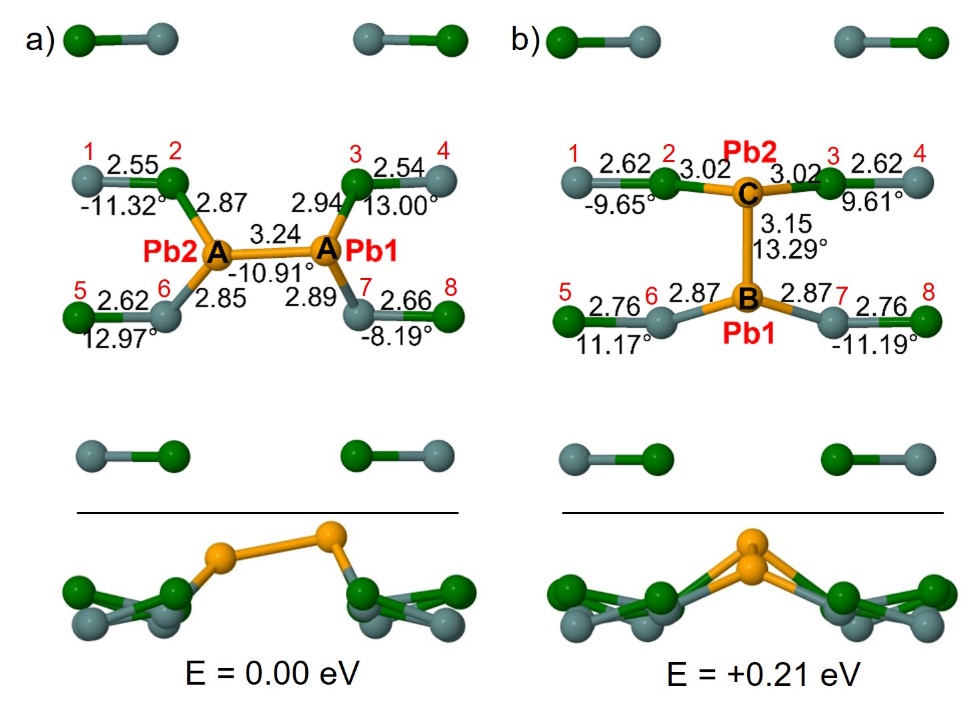Study of the properties of surface structures
Recent theoretical study shows that modeling of the Ge(001) surface is exceptionally sensitive to the number of atoms in the crystal model. It turns out that to properly describe the electronic properties of Ge(001) it is necessary to use an adequately thick surface modeling slab. The objective of the study described in the article was to inspect the influence of the size effect on adsorption and aggregation of adatoms of lead on Ge(001) substrate. In this context, as part of the DFT calculation, the adsorption of single Pb ad-atoms (at different adsorption sites), Pb dimers parallel and perpendicular to surface germanium dimers, and infinite chains running across rows of surface dimers were studied. The article shows that the most favorable configuration of Pb monomer on Ge(001) substrate is insensitive to changes in slab thickness. The same is true for a Pb dimer parallel to surface germanium dimers and an infinite chain made of such dimers. However, in the case of Pb dimer perpendicular to surface dimers, lying between rows of such dimers, the dependence of both structural parameters and electron properties on the thickness of the germanium surface model slab used in the calculations is observed.



The paper titled Isolated Pb adstructures on Ge(1 0 0) slabs with variable thickness by Puchalska A., Jurczyszyn L., Radny M. W. was published in the journal Materials Science and Engineering: B Advanced Functional Solid-State Materials (Mater. Sci. Eng. B-Adv. Funct. Solid-State Mater. 294, 116504, 2023 DOI: 10.1016/j.mseb.2023.116504).
